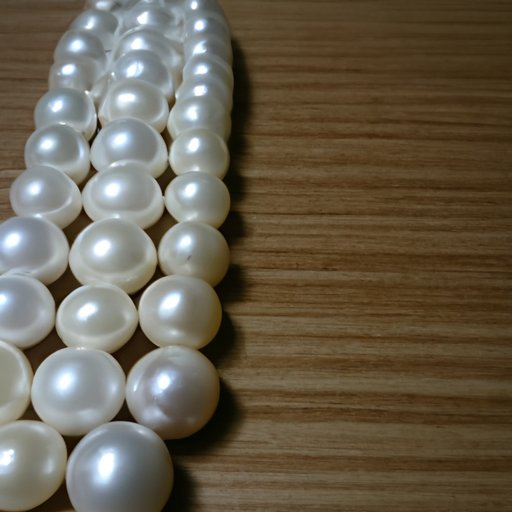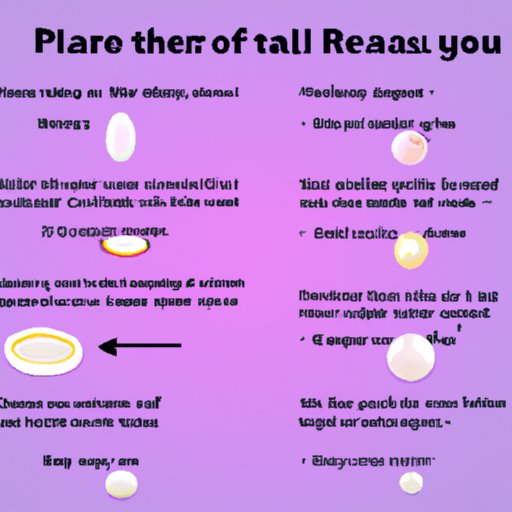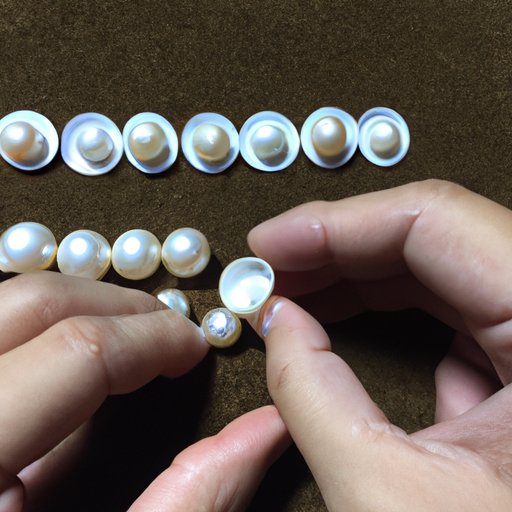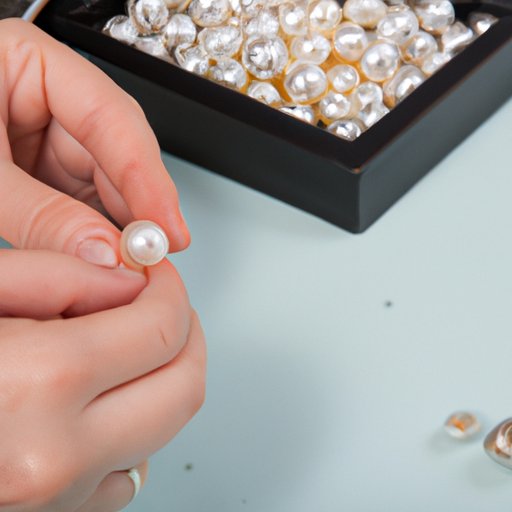Introduction
Cultured pearls have become increasingly popular in recent years, with many people opting for them over natural pearls. But are cultured pearls real? This article will explore the truth behind cultured pearls and provide you with a comprehensive guide to identifying authentic pearls. We’ll cover the definition of a cultured pearl, the difference between natural and cultured pearls, features that indicate a pearl is real, ways to spot a fake pearl, physical differences between natural and cultured pearls, and tips to determine a real pearl from a fake.
Exploring the Truth Behind Cultured Pearls: Are They Real?
When it comes to pearls, there is a lot of confusion about what is real and what is not. The term “cultured pearl” is often used interchangeably with “real pearl,” but this is not always the case. To understand the truth behind cultured pearls, we have to first define what a “cultured pearl” is.
What is a “Cultured Pearl”?
A cultured pearl is a pearl that has been grown in a controlled environment by a pearl farmer. The process involves inserting a small piece of mantle tissue or a nucleus into an oyster or mussel. The mollusk then secretes a substance called nacre, which coats the nucleus and forms a pearl. Cultured pearls can be either freshwater or saltwater pearls and come in a range of shapes, sizes, and colors.

The Difference Between Natural and Cultured Pearls
Natural pearls are formed naturally in the wild by mollusks without any human intervention. They are very rare and highly valuable, making them sought-after gems. On the other hand, cultured pearls are farmed in controlled environments and are much more affordable than their natural counterparts. While both natural and cultured pearls have their advantages and disadvantages, they are both considered to be real pearls.

A Guide to Understanding What Makes a Cultured Pearl Real or Fake
In order to identify a real pearl from a fake one, there are certain features that you should look for. First, check the surface of the pearl for any blemishes or irregular shapes. A real pearl should have a smooth, even surface with no bumps or ridges. Secondly, look at the color of the pearl. Real pearls come in a variety of shades, from white to pink to black. Fake pearls tend to have a uniform, artificial color that looks unnatural. Lastly, examine the luster of the pearl. A real pearl should have a bright, reflective sheen, while a fake pearl may lack luster or appear dull.
Comparing Natural and Cultured Pearls: The Difference Between Real and Fake
When determining whether a pearl is real or fake, it is important to know the differences between natural and cultured pearls. Natural pearls are typically rounder and smoother than cultured pearls, which tend to be more irregularly shaped. Natural pearls also tend to have more luster and a deeper color. Another way to tell the difference is to look at the nacre. Natural pearls tend to have thicker nacre than cultured pearls.

Learn How to Spot Real Cultured Pearls from Fakes
When evaluating a pearl, there are several factors that should be taken into consideration. First, look at the size of the pearl. Real pearls tend to be larger than fake ones. Secondly, check the weight of the pearl. Real pearls tend to be heavier than fakes. Thirdly, inspect the drill holes. Real pearls usually have perfectly round drill holes, while fake pearls may have uneven or off-center drill holes. Finally, examine the surface of the pearl. Real pearls should have a smooth, even surface, while fake pearls may have bumps or ridges.
Uncovering the Myths Surrounding Cultured Pearls: Are They Real?
There are many myths surrounding cultured pearls, but the truth is that they are just as real as natural pearls. One common misconception is that cultured pearls are “fake” because they are grown in a controlled environment. However, this is not true. Cultured pearls are still real pearls and can be just as beautiful and valuable as natural pearls. Another myth is that cultured pearls are not as durable as natural pearls. While this may be true in some cases, it is not always the case. Cultured pearls can be just as strong and long-lasting as natural pearls.
The History of Cultured Pearls: How Far Have We Come From Real to Fake?
Pearl cultivation has a long history, dating back to Ancient China in the 13th century. Today, modern technology has advanced the industry and made it possible to produce more and better quality pearls. With advances in farming techniques, it is now possible to produce a wide variety of pearls, including freshwater, saltwater, and Tahitian pearls. As the industry continues to evolve, it is becoming easier to distinguish real pearls from fakes.
What Makes a Cultured Pearl Real? A Comprehensive Guide to Identifying Authentic Pearls
When evaluating a pearl, there are several factors that should be taken into consideration. First, look at the size of the pearl. Real pearls tend to be larger than fake ones. Secondly, check the weight of the pearl. Real pearls tend to be heavier than fakes. Thirdly, inspect the drill holes. Real pearls usually have perfectly round drill holes, while fake pearls may have uneven or off-center drill holes. Finally, examine the surface of the pearl. Real pearls should have a smooth, even surface, while fake pearls may have bumps or ridges.
In addition to these factors, it is also important to consider the source of the pearl. Buying pearls from reputable sources is the best way to ensure that you are getting a real pearl. Additionally, there are many online resources available to help you evaluate pearls and determine if they are real or fake.
Conclusion
In conclusion, cultured pearls are real. They are grown in controlled environments and come in a range of shapes, sizes, and colors. When evaluating a pearl, it is important to consider the size, weight, drill holes, and surface of the pearl. Additionally, it is important to buy pearls from reputable sources in order to ensure they are authentic. By following these tips, you can be sure that you are getting a real pearl.
(Note: Is this article not meeting your expectations? Do you have knowledge or insights to share? Unlock new opportunities and expand your reach by joining our authors team. Click Registration to join us and share your expertise with our readers.)
